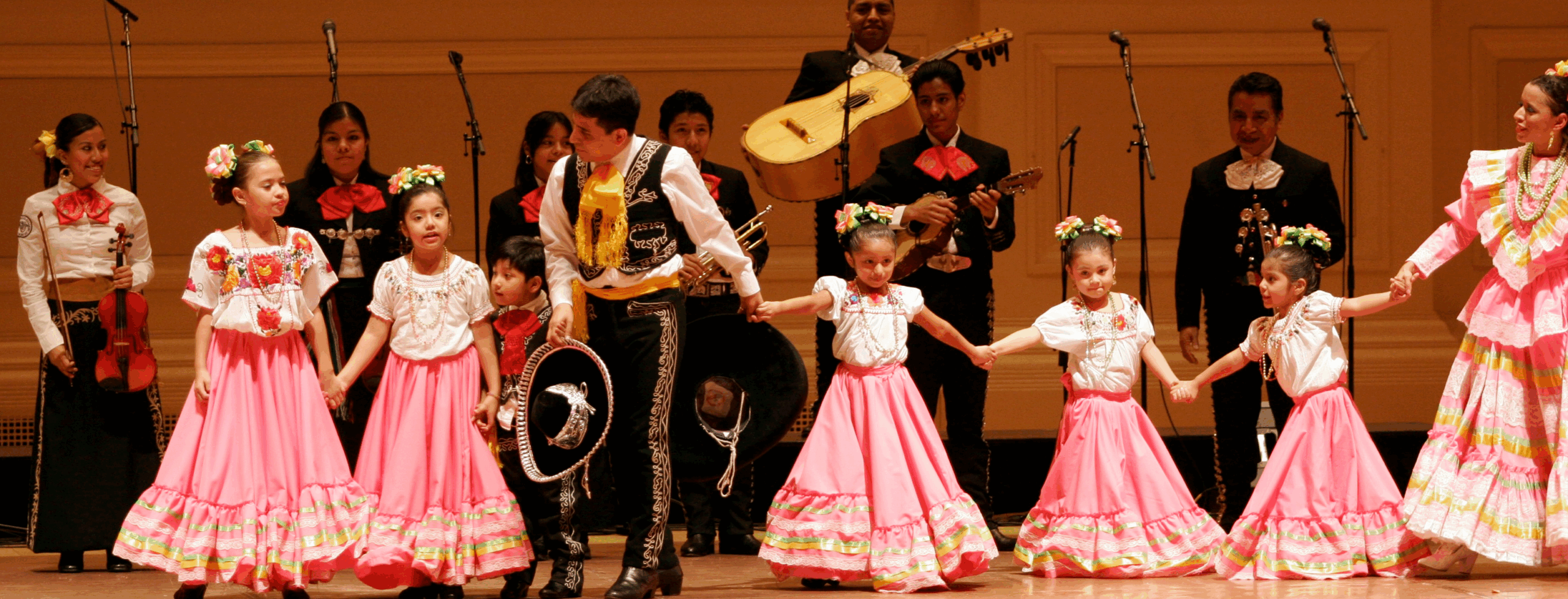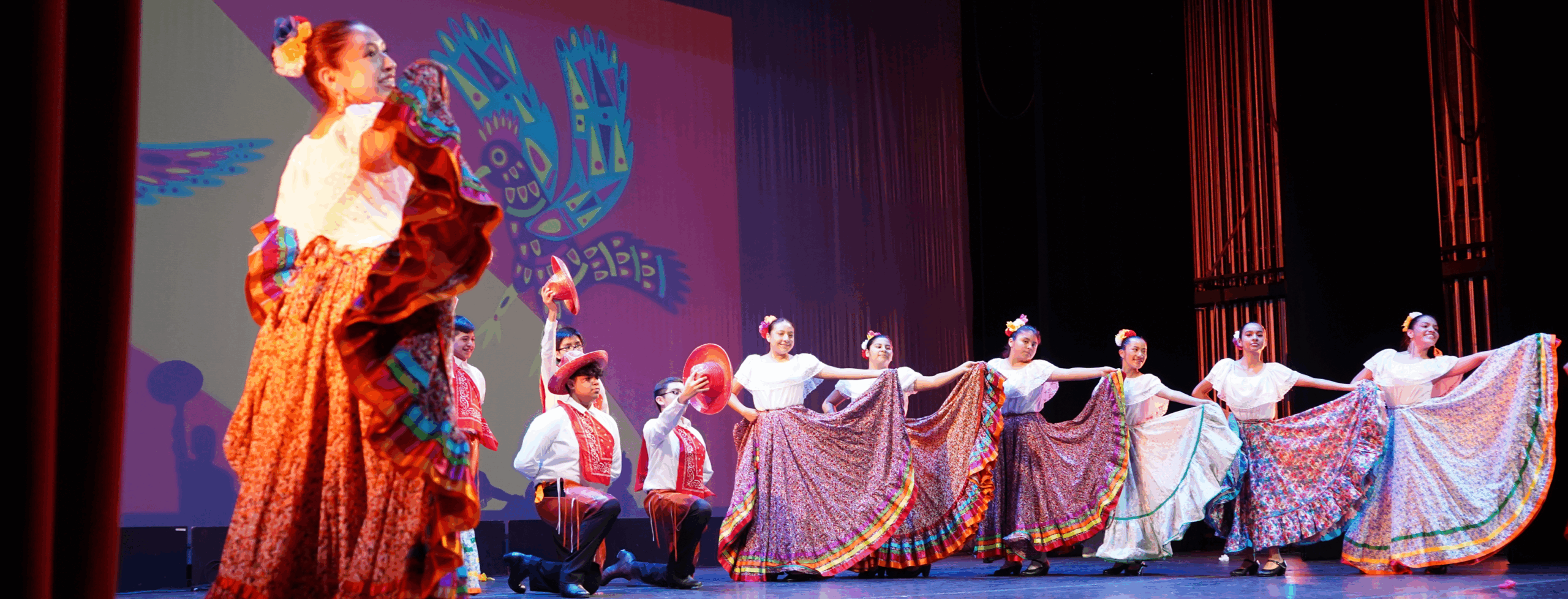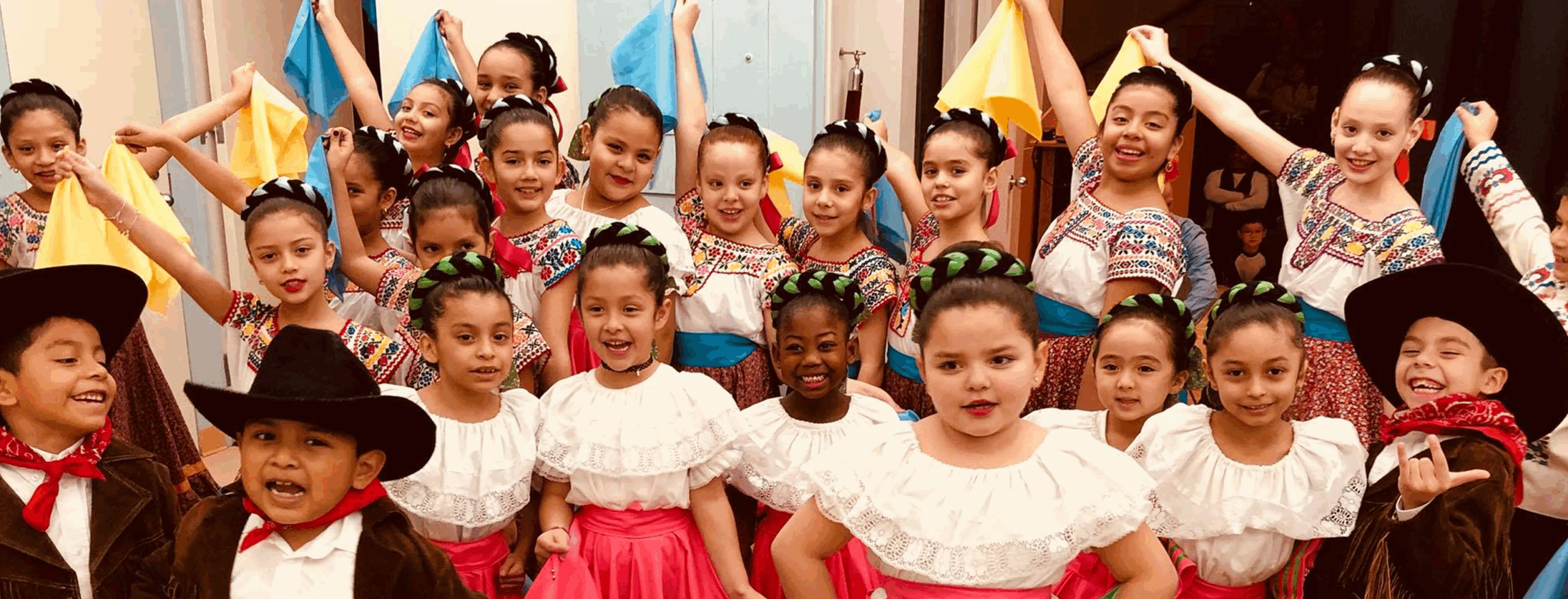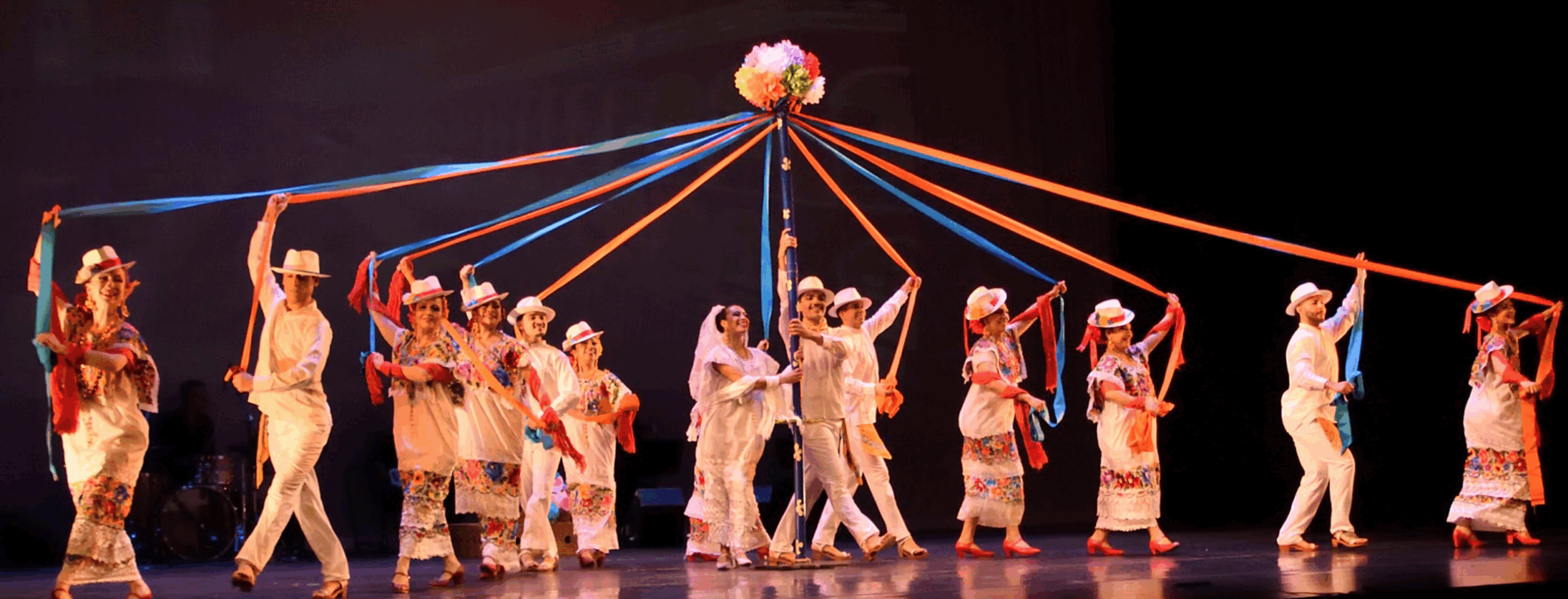
A Cultural Journey That Sparks Dialogues: A Conversation with Alberto Lopez
Alberto Lopez, co-founder of Calpulli Mexican Dance Company, shares how he uses dance and storytelling to create meaningful connections, engage communities, and celebrate cultural heritage.
As a choreographer, wardrobe designer & maker, and storyteller in Mexican Folklorico dance and music, Alberto Lopez places hope, optimism, and community at the core of his practice. In this conversation, he shares insights into his artistic vision, explores the evolving meaning of “authenticity,” and discusses how he cultivates new audiences.
New York Foundation for the Arts (NYFA): Tell us about Calpulli Mexican Dance Company. In what context did you establish the organization and what is your vision for it?
Alberto Lopez (AL): Calpulli was founded in the fall of 2003, in a small apartment in the heart of Jackson Heights, Queens, by Juan Castaño and I. At the time, there were no accessible arts programs dedicated to serving the Mexican and Mexican American communities in the Ttri-Sstate area. I felt it was important to pass on traditions of my own family and where I came from to the future generations.
I grew up in San Antonio Chiltepec in Puebla, Mexico, and began to study dance when I was 12. Folklorico has been an essential part of my life since then. With my experience as a folklórico teacher and Juan’s organizational expertise, we began the exciting journey of building what would become Calpulli.
In our early days, we focused on live performance. But within six months from our debut, our audiences began to ask for education programs for their childrens’ schools. By the following year, we were offering assemblies and workshops in public schools in New Rochelle and Sunset Park. The demand came directly from within the Mexican American community. In 2006, we launched our first community classes with just five students. Today, this program serves 200 students each week and is a critical part of Calpulli’s arts education work.
Since the beginning, I’ve led the development of our programming, while Juan has guided the business side, such as strategic planning and operations. As a Mexican-led company, Calpulli has a mission to celebrate the rich diversity of Mexican and Mexican American cultural heritage through dance and live music.
As one of the few companies in the U.S. presenting fully produced shows based in traditional Mexican folklorico today, we see the company as a family—a space for artists and audiences alike to explore a range of themes through a Mexican lens. We love sharing Mexican culture with all audiences—from fans of dance and music from all backgrounds to Mexican American families seeing their heritage reflected in our work.

NYFA: Your company not only produces performances that celebrate traditional art forms and share community stories, but also creates meaningful opportunities to engage and educate new audiences. Why is this an essential part of your artistic process? What factors do you consider when designing these experiences, and what insights have you gained along the way?
AL: Sharing stories and connecting communities has always been at the core of my artistic practice—this is something I’ve come to understand more deeply as I reflect on how I create.
In Boda Mexicana, a production that tells the story of a couple’s union through Mexican songs, dances, customs, rituals, and ceremonies, I wove together traditions passed down from my grandparents, elements from Mayan legends, and a variety of Mexican folk dance styles. It’s a fusion of memory, culture and creativity, and a new story.
As I developed the piece, I reflected on how to share these traditions with younger generations in my community, while also making the work accessible and meaningful to audiences unfamiliar with the culture. I focused on weaving in universal themes and story structures, while incorporating cultural elements from my own heritage. I closely observe our audiences—paying attention to watching what moved them, what resonated, and what drew them in.
Keeping families together and building community are my core values. Boda Mexicana is more than a celebration of the union between two people or families—it’s also an invitation for the audience to come together and engage in dialogue.
When young audience members leave a performance with questions for their parents or grandparents about their own family stories and cultural traditions, or when people from different backgrounds begin to draw connections between their experiences and what they see on stage—that’s a powerful kind of union. That’s the impact I hope to create.
As more families began attending our shows and we expanded our work with schools, I realized it was time to create study guides and curricula. These resources provide cultural context, highlight key traditions, and questions for reflection. They offer multiple ways for audiences—especially young people—to connect more deeply with the stories we tell and the heritage we celebrate.

NYFA: Cultures and traditions continuously evolve, whether they remain in their homeland or adapt to a new environment. How do you navigate the idea of “authenticity”?
AL: It’s true—every culture adapts and evolves in response to its environment, and Calpulli is no exception. Take Boda Mexicana for example: in telling this story, we incorporate elements of ballet into the choreography—because we’re based in New York City, a place with strong ballet traditions.
For me, authenticity means honoring the source: respecting where the knowledge comes from and maintaining a meaningful connection to it. Growing up, I learned directly from my family and from practitioners who generously shared their knowledge. After founding Calpulli, we made it a priority to travel across Mexico to learn traditions firsthand from various parts of Mexico. We spoke with elders and cultural practitioners who deeply understand their local customs.
For me, authenticity means honoring the source: respecting where the knowledge comes from and maintaining a meaningful connection to it.
-Alberto Lopez
Interpretation and adaptation are natural parts of any creative process. For me, authenticity comes from being mindful of where the knowledge originates, returning to the primary sources, reflecting on my own intentions, and working honestly within the context I’m given. For example, a full theatrical production of Puebla: The Story of Cinco de Mayo would be different from a school assembly version. When I work with students, I focus more on how dance and other folk arts can help them discover their passions and express their unique perspective on the world.
In those moments, I’m especially aware that young audiences may see my interpretation as a definitive version of the tradition. So I approach educational settings with this extra care. On the stage, with more space for creative freedom, I can explore interpretation in a different way.

NYFA: What’s next for Calpulli Mexican Dance Company?
AL: The company will continue to develop productions rooted in the stories and traditions of Mexico. In the Arts in Education department, which I lead, we’re expanding our reach with new programs dedicated to serving senior communities across New York City, while continuing to build strong relationships with public schools and local neighborhoods.
Right now, we’re preparing for the Calpulli Community Recital on June 15 at the Staten Island Children’s Museum. The event will feature 200 students who have been learning with us throughout the year. We are proud that several alumni of Calpulli Community have gone on to form part of the professional touring company, work as our teaching artists, and are active members of NYC’s rich arts workforce. We’re also actively building a pipeline to support emerging leaders and administrators from within our own community to step into arts leadership roles.
NYFA: What’s one piece of advice you’d share with fellow immigrant artists navigating their careers in the U.S.?
AL: Don’t give up. Some doors may close—but when you know your own value, others will open. One closed door can lead to 10 new opportunities. Keep going.
About Calpulli Mexican Dance Company
Calpulli Mexican Dance Company’s mission is to celebrate the diversity of Mexican and Mexican-American cultural heritage through dance-based programming including live music. Programs are delivered in three areas: original full-scale dance theater productions that tour locally, nationally, and internationally; free and low cost community outreach activities, including donation-based music and dance lessons that serve children and families; and in-school residencies, workshops, and assemblies.
About Alberto Lopez
Alberto Lopez Herrera is a choreographer, costume designer & maker, and teaching artist with over 30 years of experience in Mexican Folklorico. Originally from San Antonio Chiltepec in Puebla, Lopez Herrera began his studies of Mexican folkloric dance at the age of 12 at the Centro Escolar Benito Juárez de Acatlán de Osorio. He completed the National Dance Institute’s intensive Teaching Artist training in New York. Lopez Herrera was a dancer and choreographer with several groups and companies working with distinguished choreographers Francisco Nevarez and Clarissa Marcovich. He continues to create traditional garments used in Mexican folkloric dance. With great attention to detail, he designs garments from across Mexico. His pivotal role in costuming can be seen throughout the company’s repertoire. Under his Artistic Direction, Calpulli Mexican Dance Company has performed at noted venues including Jacob’s Pillow Dance Festival (Inside/Out Series), Wortham Center (Houston, TX), Humboldt State University, the Kingdom of Bahrain, Penn State Erie, and Lincoln Center Out of Doors, where dance critic Brian Siebert hailed Calpulli as a “terrific company” after its performance. Lopez Herrera was named “Star of Queens” by the Queens Courier for his artistic accomplishments and commitment to community arts programming. He was also featured by People en Español in the program “New American Voices” and was a Crain’s NY 2022 Notable Hispanic Leader. He was co-choreographer with Joshua Bergasse and dramaturg of the off-Broadway production A Crossing. Most recently, Lopez Herrera was commissioned by the Fort Wayne Dance Collective in Indiana for contemporary and folkloric dances telling Día de Muertos-inspired stories. He was Artistic Director of Calpulli Mexican Dance Company from 2003 to 2023 when he directed Monarcas.
– Ya Yun Teng, Program Officer, Immigrant Artist Program
This post is part of the Immigrant Artist Program Newsletter. Subscribe to this free monthly e-mail for artist’s features, opportunities, and events. Learn more about NYFA Immigrant Artist Mentoring Program.
- NYSCA and NYFA Announce Innovative Grant Program to Establish Reserve Funds for NYS Arts and Culture Nonprofits
- The Key to A Successful Collaboration: A Conversation with Artist Sizhu Li and Curator Jacqueline Saragoza McGilvray
- NYFA Inducts Jaye Moon, JT Rogers, Cristina Enriquez-Bocobo, and Commissioner Laurie Cumbo into its Hall of Fame at Annual Spring Benefit